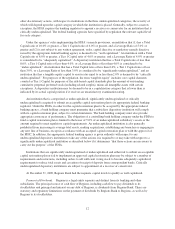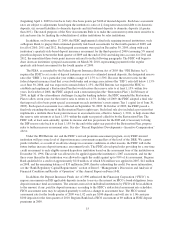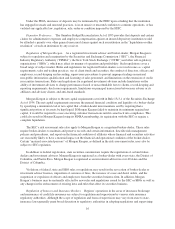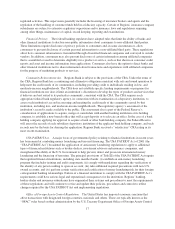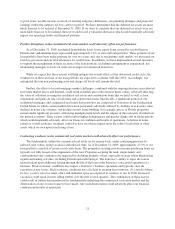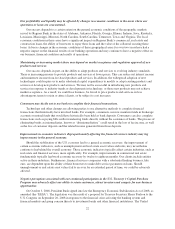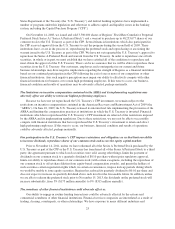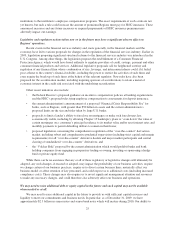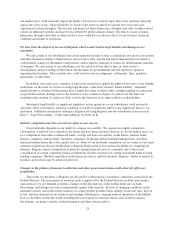Regions Bank 2009 Annual Report Download - page 36
Download and view the complete annual report
Please find page 36 of the 2009 Regions Bank annual report below. You can navigate through the pages in the report by either clicking on the pages listed below, or by using the keyword search tool below to find specific information within the annual report.Our profitability and liquidity may be affected by changes in economic conditions in the areas where our
operations or loans are concentrated.
Our success depends to a certain extent on the general economic conditions of the geographic markets
served by Regions Bank in the states of Alabama, Arkansas, Florida, Georgia, Illinois, Indiana, Iowa, Kentucky,
Louisiana, Mississippi, Missouri, North Carolina, South Carolina, Tennessee, Texas and Virginia. The local
economic conditions in these areas have a significant impact on Regions Bank’s commercial, real estate and
construction loans, the ability of borrowers to repay these loans and the value of the collateral securing these
loans. Adverse changes in the economic conditions of these geographical areas for over two years have had a
negative impact on the financial results of our banking operations and may continue to have a negative effect on
our business, financial condition and results of operations.
Maintaining or increasing market share may depend on market acceptance and regulatory approval of new
products and services.
Our success depends, in part, on the ability to adapt products and services to evolving industry standards.
There is increasing pressure to provide products and services at lower prices. This can reduce net interest income
and noninterest income from fee-based products and services. In addition, the widespread adoption of new
technologies could require us to make substantial capital expenditures to modify or adapt existing products and
services or develop new products and services. We may not be successful in introducing new products and
services in response to industry trends or developments in technology, or those new products may not achieve
market acceptance. As a result, we could lose business, be forced to price products and services on less
advantageous terms to retain or attract clients, or be subject to cost increases.
Consumers may decide not to use banks to complete their financial transactions.
Technology and other changes are allowing parties to use alternative methods to complete financial
transactions that historically have involved banks. For example, consumers can now maintain funds in brokerage
accounts or mutual funds that would have historically been held as bank deposits. Consumers can also complete
transactions such as paying bills and/or transferring funds directly without the assistance of banks. The process of
eliminating banks as intermediaries, known as “disintermediation,” could result in the loss of fee income, as well
as the loss of customer deposits and the related income generated from those deposits.
Improvements in economic indicators disproportionately affecting the financial services industry may lag
improvements in the general economy.
Should the stabilization of the U.S. economy lead to a general economic recovery, the improvement of
certain economic indicators, such as unemployment and real estate asset values and rents, may nevertheless
continue to lag behind the overall economy. These economic indicators typically affect certain industries, such as
real estate and financial services, more significantly. For example, improvements in commercial real estate
fundamentals typically lag broad economic recovery by twelve to eighteen months. Our clients include entities
active in these industries. Furthermore, financial services companies with a substantial lending business, like
ours, are dependent upon the ability of their borrowers to make debt service payments on loans. Should
unemployment or real estate asset values fail to recover for an extended period of time, we could be adversely
affected.
Negative perceptions associated with our continued participation in the U.S. Treasury’s Capital Purchase
Program may adversely affect our ability to retain customers, attract investors and compete for new business
opportunities.
On October 3, 2008, President Bush signed into law the Emergency Economic Stabilization Act of 2008, as
amended (the “EESA”). The legislation was the result of a proposal by Treasury Secretary Henry Paulson to the
U.S. Congress on September 20, 2008 in response to the financial crises affecting the banking system and
financial markets and going concern threats to investment banks and other financial institutions. The United
22


